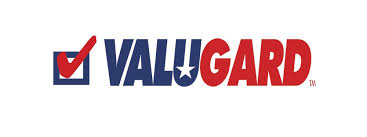The Renault Kadjar has been officially revealed ahead of its public debut at the Geneva motor show next month.
The Kadjar shares many components with the Nissan Qashqai, thanks to the Renault-Nissan Alliance, and it will be taking on much the same market as the Qashqai, as well as the likes of the Mazda CX-5, Hyundai ix35 and the Ford Kuga.
The Kadjar will make its public debut at the Geneva motor show in March before it goes on sale in Europe in early summer. Renault is not revealing technical details until Geneva, but the company's vice president for exterior design, Anthony Lo, said that there are a lot of shared parts between the two cars.
"The agreement is that everything you see is different, but we had a lot of freedom to create our own stuff," said Lo. "We tried to carry over everything you don't see."
It is expected to share engines such as the 1.5 and 1.6-litre diesels from the Qashqai. Renault's head of design Laurens van den Acker said: "We have the benefit of the very good engines, with low CO2 values. I think when you look at this as a package, in terms of CO2, engines, quality, design and flexibility and functionality of the interior, you have a very strong package."
Full trim and specification levels will be revealed closer to the on-sale date, but Renault says the Kadjar will be offered with a reversing camera, a hands-free parking system, engine stop-start, emergency brake assist, lane departure warning and road-sign recognition with speed limit alerts.
Despite being predominately an on-road car, it is also designed to cope with some off-roading, with a choice of two- or four-wheel drive. The two-wheel-drive models will come with an Extended Grip system which is claimed to enhance grip on low-traction surfaces. The all-wheel-drive system has three modes: Auto, Lock and 2WD.
The Kadjar also comes with a 19cm-high ground clearance, and approach and departure angles of 18 and 25 degrees respectively. It also comes with front and rear skid plates and a stainless steel boot-sill guard for added protection.
The Kadjar is slightly larger than the Qashqai: it is 4.45m long, 1.84m wide and is 1.6m high. This means it is set to offer a slightly larger boot than the Qashqai's; it is 42 litres larger, at 472 litres, with the rear seats in place.
The boot will also come with several practical touches, such as handles to drop the rear seats on a 60/40 split, a system that allows the compartment to be split into two or three sections and an adjustable boot floor.
The front passenger seat can also be dropped to create a small table, or to load longer items. Renault also says there are 30 litres of storage around the cabin.
The Kadjar will also come with the latest version of Renault's R-Link 2 infotainment system, which will be able to offer voice control, navigation, Bluetooth and radio.
Laurens van den Acker spoke of the Kadjar's importance to Renault, saying: "I think it is no secret that we are very late with this segment. It is a big gap in our line-up that we have finally filled and it is very important for us to finally have a C crossover."
Despite the close relationship with the Qashqai, van der Acker said the aim was to create a link with the company's current cars, saying: "It was important to do the big brother of Captur - it was not important to do a sister of Qashqai."
However, he said the two Renault/Nissan cars could sit alongside each other, saying: "The goal is not to steal sales from the Qashqai. It is to steal sales from Volkswagen, from Kia, from Toyota, and I think there is room in the market to do it."
Get the latest car news, reviews and galleries from Autocar direct to your inbox every week. Enter your email address below:
from Autocar RSS Feed http://ift.tt/1zwzEZu
via AGYA









